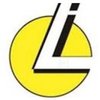Filter interviews by
Balaji Amines Chemical Plant Operator Interview Questions, Process, and Tips
Balaji Amines Chemical Plant Operator Interview Experiences
1 interview found

(5 Questions)
- Q1. What is mean by heating
- Ans.
Heating is the process of increasing the temperature of a substance or object.
Heating involves the transfer of energy to a substance, causing its molecules to move faster and increase in temperature.
It can be achieved through various methods such as conduction, convection, or radiation.
Examples of heating include boiling water on a stove, using a microwave to warm food, or using a heater to warm a room.
- Q2. What is mean by steam get
- Ans.
Steam get refers to the process of obtaining steam in a chemical plant.
Steam get involves generating steam through the use of boilers or other heat sources.
The steam is typically used for various purposes such as heating, power generation, or as a reactant in chemical reactions.
Steam get may involve treating the feedwater to remove impurities and ensure the quality of the steam.
Steam get is an essential part of the ope...
- Q3. What is mean by circulation
- Ans.
Circulation refers to the movement or flow of a substance or fluid within a system or organism.
Circulation can refer to the movement of blood through the circulatory system in the human body.
In a chemical plant, circulation can refer to the movement of fluids or gases through pipes or vessels.
Circulation is important for maintaining proper distribution and transport of substances within a system.
Examples of circulation...
- Q4. What is mean by collection wall
- Ans.
A collection wall is a barrier used to collect and contain materials or substances in a chemical plant.
A collection wall is typically made of materials that are resistant to the substances being collected, such as stainless steel or concrete.
It is designed to prevent the spread of hazardous materials in case of leaks or spills.
Collection walls are commonly used in areas where chemicals are stored or processed, such as ...
- Q5. What is mean by vaccum pressure
- Ans.
Vacuum pressure is the pressure below atmospheric pressure.
Vacuum pressure is the pressure below atmospheric pressure.
It is measured in units such as torr, pascal, or bar.
Vacuum pressure is commonly used in industries like chemical plants, manufacturing, and research laboratories.
Examples of vacuum pressure applications include distillation, evaporation, and vacuum drying.
Vacuum pressure is created by removing air or g...
Interview Preparation Tips
Top trending discussions






Interview questions from similar companies

I applied via Referral and was interviewed in Feb 2023. There were 3 interview rounds.

(1 Question)
- Q1. What is a Distillation... What is a filterations & drying
- Ans.
Distillation is a process of separating components of a mixture based on their boiling points. Filtration is a process of separating solids from liquids or gases. Drying is a process of removing moisture from a substance.
Distillation involves heating a mixture to vaporize the component with the lowest boiling point, then condensing the vapor to collect the purified component.
Filtration involves passing a mixture throug...
(1 Question)
- Q1. What is a family job
Interview Preparation Tips
Good place for job

Production Supervisor Interview Questions & Answers
Meghmani Organicsposted on 30 Aug 2021
I applied via Company Website and was interviewed in Jul 2021. There was 1 interview round.
Interview Questionnaire
3 Questions
- Q1. Process relative
- Q2. Chemical questions
- Q3. Safety handling
Interview Preparation Tips

Production Supervisor Interview Questions & Answers
Meghmani Organicsposted on 15 Apr 2023
I applied via Approached by Company and was interviewed before Apr 2022. There were 2 interview rounds.

(7 Questions)
- Q1. How many types of valves.?
- Ans.
There are various types of valves used in different industries for controlling the flow of fluids or gases.
Gate valve
Ball valve
Butterfly valve
Check valve
Globe valve
Diaphragm valve
Plug valve
Needle valve
Pressure relief valve
Safety valve
- Q2. What is the Pressure units.?
- Ans.
Pressure units are used to measure the force exerted on a surface per unit area.
Pressure is typically measured in units such as pascal (Pa), bar, psi, or atmosphere (atm).
1 pascal (Pa) is equal to 1 newton per square meter (N/m²).
1 bar is approximately equal to atmospheric pressure at sea level (1 atm).
1 psi (pound per square inch) is equal to approximately 6895 pascals (Pa).
- Q3. What is the fire trangle.? And diamonds.?
- Ans.
The fire triangle is a model that explains the three elements required for a fire to start and continue. Diamonds are a form of carbon that is highly valued for their beauty and durability.
The fire triangle consists of three elements: fuel, heat, and oxygen.
If any of these elements are removed, the fire will be extinguished.
Diamonds are formed deep within the Earth's mantle and are brought to the surface through volcan...
- Q4. Fire trangle 1)Oxygen 2)heat 3)fuel Diamonds 1)red 2)yellow 3)white 4)blue
- Q5. What is the Bernoulli equation.?
- Ans.
The Bernoulli equation relates the pressure, velocity, and elevation of a fluid in a streamline.
The Bernoulli equation is a fundamental equation in fluid dynamics.
It states that the total energy of a fluid remains constant along a streamline.
The equation relates the pressure, velocity, and elevation of the fluid.
It is derived from the principle of conservation of energy.
The equation is commonly used in various applicat...
- Q6. How many type unit operation & unit process
- Ans.
There are numerous types of unit operations and unit processes in production.
Unit operations involve physical changes to materials, such as mixing, filtration, and distillation.
Unit processes involve chemical changes, such as oxidation, reduction, and hydrolysis.
Examples of unit operations include crushing, grinding, and drying.
Examples of unit processes include fermentation, polymerization, and chlorination.
- Q7. Unit operation 1)Distillation 2)filtration 3)drying 4)extraction 5)crystallisation Unit process 1)oxidation 2)reduction 3)Alkylation 4)chlorination
Interview Preparation Tips
- Time Study
- Physical Education

(2 Questions)
- Q1. What is your Raw material in bifenthrin?
- Ans.
The raw material in bifenthrin is a synthetic pyrethroid insecticide.
Bifenthrin is synthesized from various chemical compounds.
It is commonly derived from the reaction between 2-methyl-3-bromobenzyl cyanide and 2,2-dimethyl-1,3-dioxane-4,6-dione.
Other raw materials used in the production of bifenthrin include solvents, catalysts, and reagents.
The synthesis process involves multiple steps, including purification and for...
- Q2. What is your raw material in bifenthrin?
- Ans.
The raw material in bifenthrin is a synthetic pyrethroid insecticide.
Bifenthrin is synthesized from various chemical compounds.
It is commonly derived from the reaction of 2-methyl-3-phenylpropyl bromide with 2,2-dimethyl-3-(2-methylprop-1-enyl)cyclopropanecarboxylic acid.
Other raw materials used in the production of bifenthrin include solvents, catalysts, and reagents.
The synthesis process involves multiple steps and r...

Production Supervisor Interview Questions & Answers
National Organic Chemical Industriesposted on 8 Mar 2024
I appeared for an interview in Sep 2023.
(1 Question)
- Q1. I don't remember but most of the questions from your previous job and the MSDS of chemicals you handle
Interview Preparation Tips

I applied via Walk-in and was interviewed in Aug 2021. There was 1 interview round.
(1 Question)
- Q1. Electrical engineering matenanace
Interview Preparation Tips

Mechanical Technician Interview Questions & Answers
Kansai Nerolac Paintsposted on 18 Oct 2021
I applied via Walk-in
Interview Questionnaire
4 Questions
- Q1. Maintenance machical packing department
- Q2. All conver maintenance packing department
- Q3. All pump maintenance and wpb
- Q4. Senior technician mechanical maintenance
Interview Preparation Tips

Electrical Engineer Interview Questions & Answers
Kansai Nerolac Paintsposted on 17 Mar 2025
I appeared for an interview in Sep 2024, where I was asked the following questions.
- Q1. Required improve to KNPL
- Q2. Sallery should be increas
Interview Preparation Tips

(5 Questions)
- Q1. What is your name
- Q2. What safety did you use while working?
- Ans.
Always wear appropriate personal protective equipment (PPE)
- Q3. What is a fluid bed dryer used for?
- Ans.
A fluid bed dryer is used for drying powders, granules, and other solid materials by fluidizing them with hot air.
Used in pharmaceutical, food processing, and chemical industries
Provides uniform drying and prevents overheating
Can be used for drying materials with different particle sizes and shapes
- Q4. What is resin used for?
- Ans.
Resin is a sticky substance derived from plants and used for various purposes such as adhesives, coatings, and in the production of plastics.
Resin is commonly used in the production of adhesives and coatings.
It is also used in the manufacturing of plastics and composite materials.
Resin can be derived from plants such as pine trees or synthesized from petrochemicals.
Examples of resin include epoxy resin, polyurethane re
- Q5. How is resin measured in kg/liter?
- Ans.
Resin is measured in kg/liter by calculating the weight of resin in kilograms and dividing it by the volume in liters.
Resin weight in kilograms is divided by the volume in liters to get the measurement in kg/liter.
For example, if you have 5 kg of resin in a container with a volume of 2 liters, the measurement would be 5 kg / 2 liters = 2.5 kg/liter.
Interview Preparation Tips
Balaji Amines Interview FAQs
Tell us how to improve this page.
Balaji Amines Interviews By Designations
- Balaji Amines Production Incharge Interview Questions
- Balaji Amines Senior Product Executive Interview Questions
- Balaji Amines Chemical Process Engineer Interview Questions
- Balaji Amines Chemical Plant Operator Interview Questions
- Balaji Amines Civil Site Engineer Interview Questions
- Balaji Amines Boiler Operation Engineer Interview Questions
Interview Questions for Popular Designations
- Chemical Engineer Interview Questions
- Diploma Chemical Engineer Interview Questions
- Chemical Process Engineer Interview Questions
- Trainee Chemical Engineer Interview Questions
- Junior Engineer - Chemical Interview Questions
- Chemist Interview Questions
- Chemical Analyst Interview Questions
- Production Chemist Interview Questions
- Show more
Balaji Amines Chemical Plant Operator Interview Process
based on 1 interview
Interview experience
Interview Questions from Similar Companies
Balaji Amines Chemical Plant Operator Reviews and Ratings
based on 1 review
Rating in categories
|
Shift Incharge
31
salaries
| ₹3 L/yr - ₹12.1 L/yr |
|
HR Assistant
16
salaries
| ₹1.3 L/yr - ₹3.5 L/yr |
|
QC Chemist
14
salaries
| ₹1.2 L/yr - ₹3 L/yr |
|
Field Operator
11
salaries
| ₹1.3 L/yr - ₹5 L/yr |
|
Process Engineer
10
salaries
| ₹3.6 L/yr - ₹5 L/yr |

Berger Paints

Kansai Nerolac Paints

AkzoNobel

Sheenlac Paints
- Home >
- Interviews >
- Balaji Amines Interview Questions >
- Balaji Amines Chemical Plant Operator Interview Questions









